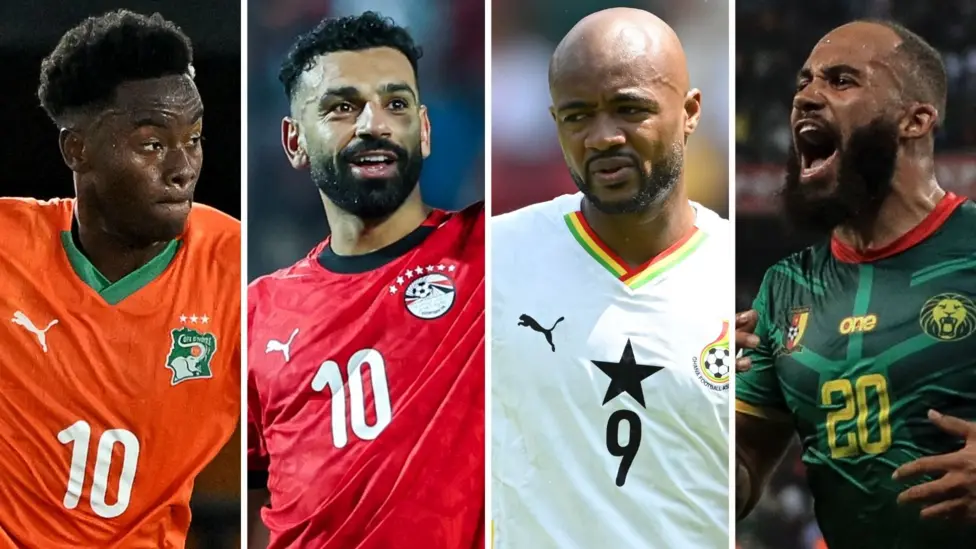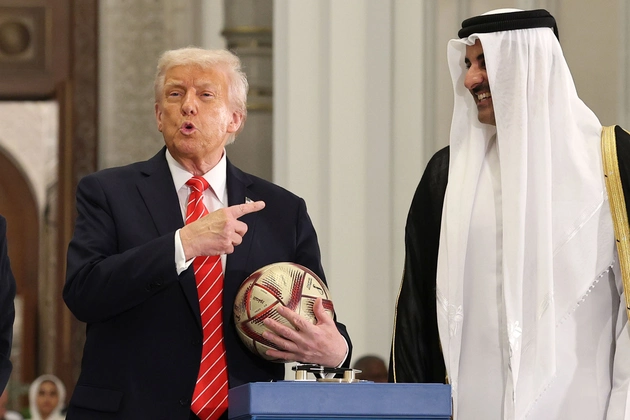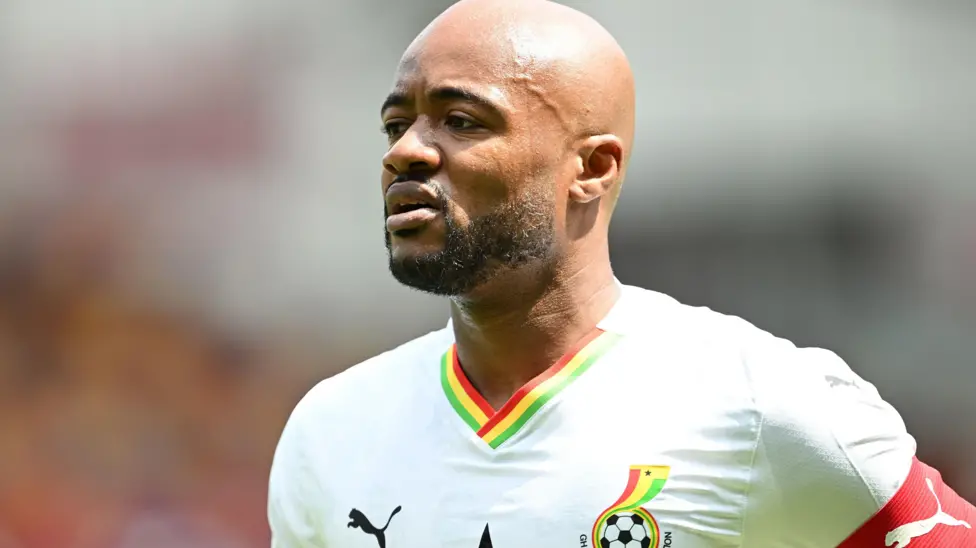
This article is more than
1 year oldWhy Is South America’s Leading Soccer Tournament Being Played in the U.S.?

Argentina will be defending its title in Atlanta, and its first opponent will be Canada.
On Thursday, at 8 p.m. Eastern Time, Lionel Messi’s Argentina will defend its title as the South American champion in the opening game of the Copa América, the longest-running international soccer tournament in the world. It won’t take place, however, in any country south of the Darién jungle but in the Mercedes-Benz Stadium, in Atlanta, and Argentina’s first opponent will be Canada. The United States, Mexico, Jamaica, Panama, and Costa Rica will also participate in this South American tournament, which will be held in Atlanta, East Rutherford, Orlando, Charlotte, Kansas City, Arlington, Houston, Austin, Glendale, Las Vegas, Inglewood, and Santa Clara. The final, on Sunday, July 14th, will be played in Miami Gardens.
How has it come to this? The first and most simple answer is that South America is in such a mess that it can no longer take care of its most precious tournament. It’s not like the Copa has had a smooth history. Conceived as part of the centennial celebrations of Argentina’s independence from Spain, in 1816, its first edition took place in Buenos Aires during two weeks in July of 1916, among only four teams—Argentina, Brazil, Uruguay, and Chile. Six more national teams were added in the following decades: Paraguay, Bolivia, Peru, Ecuador, Colombia, and Venezuela, covering almost all the continent. (Guyana and Suriname, the remaining South American nations, became and still are part of concacaf, the association that governs North American, Central American, and Caribbean teams, including the U.S. national team. All other South American teams belong to conmebol.)
Different crises have interrupted the Copa over the years. It was played annually until 1929, apart from 1918, owing to the flu pandemic, and 1928, when Argentina and Uruguay participated in the Summer Olympics in Amsterdam, instead. In 1930, Uruguay hosted the first-ever World Cup, defeating Argentina in the final; the subsequent beef between the two countries—and the two leading teams—prevented the Copa from being played for most of the following decade. Various reasons contributed to only six Copa Américas being held in the nineteen-forties, six in the fifties, and just two in the sixties, among them a waning interest in some countries before broadcasting rights made the sport hugely profitable.
In the nineteen-eighties, it was decided that host countries would be appointed in alphabetical order. Argentina and Colombia were scheduled to co-host the Copa in 2020, but it was delayed owing to the covid pandemic. The following year, the games in Colombia were suspended in the midst of widespread anti-government protests, and in Argentina, owing to health concerns. And then Brazil, which had hosted it in 2019, took over again. The final, won 1–0 by Messi’s Argentina over his friend Neymar’s Brazil, was played in an almost empty Maracanã Stadium, in Rio de Janeiro.
This year, it was Ecuador’s turn to host. But, in November, 2022, the president of the Ecuadorian Football Federation, Francisco Egas, warned in a radio interview that “we don’t have the capacity to organize the Copa América.” In fact, the nation was in an unprecedented crisis, the result of an especially devastating bout of the pandemic that led to the collapse of public services and brutal gang violence, which, at the beginning of this year, resulted in a declaration of national emergency. When Ecuador decided to pass, conmebol and concacaf saw an opportunity to offer an expanded Copa América in the U.S. in anticipation of the 2026 World Cup, when the U.S. will be one of the host countries. They not only embraced the U.S. as the host of the Copa but changed the structure of the tournament to include six concacaf members.
“Why is Copa América played in the United States this year? Simple answer: money,” Pablo Alabarces, a sociologist and the author of several books on soccer, including “A Minimal History of Football in Latin America,” told me. Oscar Barnade, the vice-president of the Argentinean Center for Research on the History of Football, concurred, saying that conmebol’s management has “surrendered to the economic power of the U.S. and the M.L.S. (Major League Soccer).”
Recent surveys by Gallup and Pew Research show that soccer, the most popular sport in the world, is now the fourth most popular in the U.S., behind football, baseball, and basketball. Additionally, it has a more diverse and younger fan base than other major sports. It is the favorite sport among Latinos, a population of more than sixty-three million people and growing; if U.S Latinos were a country, it would be the third-largest in Latin America, after Brazil and Mexico. Not surprisingly, most of the Copa América matches will be played in cities with significant Latino populations.
Beyond the conquest of this tantalizing American market, the transformation of the Copa América from a purely South American tournament into a transcontinental one fits perfectly with a global, twenty-first-century trend: the transnationalization of the sport that Americans know as soccer and the rest of the world knows as football. These days, major European teams routinely tour the U.S., Asia, and Australia in the pre-season; players from the Global South are sold as soon as they are turned out by local academies to European clubs owned not only by millionaires from around the world but even by state proxies, as in the case of Qatar, Saudi Arabia, and the United Arab Emirates. You can even follow the adventures of two Hollywood actors buying an old and failing club in a small town in Wales and turning it into a global sensation.
Tournaments, no matter how traditional, have to adapt to the new reality. Two years from now, the World Cup will be played, for the first time, in three countries—Canada, the U.S., and Mexico—and the number of participants has been boosted from thirty-two nations to a record forty-eight. On the bright side, one could argue that the sport is now reaching fans in stadiums in countries where the top international players never competed before. On the other hand, the price of admission to the matches is becoming increasingly prohibitive. Standard tickets for Copa América games average two hundred and eighty dollars and have surpassed eight thousand on resale.
In this new world, consumers replace fans, and star-struck audiences crowd out the old sport lovers. In February, almost forty thousand people attended an Inter Miami match in Hong Kong, paying at least eight hundred and eighty Hong Kong dollars (about a hundred and twelve U.S. dollars) per ticket to watch the best player in the world. But Messi, who was injured, remained on the bench the entire game. “We want Messi,” the fans chanted, and then demanded a refund. A diplomatic crisis followed, with various government and sports authorities in Hong Kong and Beijing responding angrily, and the state press alleging “political motives.” Messi was forced to clarify that, truly, he had nothing against China.
New Yorker Favorites
-
Has an old Soviet mystery finally been solved?
-
Why the rules of mustard and spaghetti sauce don’t apply to ketchup.
-
The actress who magnified her celebrity by suddenly renouncing it.
-
How the Unabomber avoided the death penalty.
-
The shareable feast of Jeremy Allen White’s Calvin Klein ad.
-
Fiction by Jamaica Kincaid: “Girl”
Support The New Yorker’s award-winning journalism. Subscribe today.




